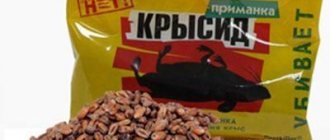If a cat's tooth is broken, it means that the dental structures have been damaged. The condition is accompanied by swelling of the gums, bleeding, swelling, and a depressed state of the pet. At the first symptoms of a violation of the integrity of the tooth, you should contact a veterinarian, who will prescribe a filling or removal and give preventive recommendations.
Veterinarians-dentists recommend strengthening the bone formations of the oral cavity of animals with daily hygiene procedures.
Why does a cat's teeth break?
A cat's incisors, canines, and molars consist of enamel, dentin and pulp. Under the influence of unfavorable factors, the enamel becomes thinner and cracks appear on it. Due to damage, the tooth becomes loose and destroyed. A kitten's teeth can break if the change from milky bone formations to permanent ones is disrupted. In addition, in babies they are still fragile, so even a slight injury to the muzzle can lead to a tooth fracture. Main reasons:
- poor nutrition, especially if the owner lets the cat chew bones;
- lack of vitamins and microelements;
- diseases of the oral cavity - gingivitis, periodontal disease;
- traumatic injuries of the jaw;
- falling or jumping from a height and hitting the face;
- toys made of hard material or not intended for animals;
- auto injury.
Treatment
This process directly depends on the nature of the damage. Damaged dentin is treated with fluoride and sealant. If the fang is more damaged and cannot be restored to a healthy state by any means, it is removed.
We recommend the article: What causes purulent wounds on the cheeks of cats?
In some cases, the animal is given a filling. Special plates are used if the crack is small. If the crack appeared because the jaw was injured and, in addition to problems with the teeth, abrasions and scratches appeared, then the jaw is treated first. The veterinarian is able to return the tooth to its original place if it has shifted. In this case, the main thing is to immediately contact a veterinary clinic, because an inflammatory process may begin.
Cats quickly adapt to life without a fang, and this will not affect his abilities or behavior in any way. The animal will be able to chew food easily and the absence of a fang will not cause any discomfort.
Symptoms: how does pathology manifest itself?
A sign that something is wrong may be the animal’s desire to hide away from everyone.
If a cat has a broken fang, the pet does not always openly show that something hurts. Therefore, the owner may not know when the animal’s tooth was knocked out. However, severe pain is present because the chipped piece of dental structure damages the tissue of the lip or the inside of the cheek. Symptoms:
- jaw soreness;
- headache;
- the cat hides in a secluded place;
- reluctance to communicate with the owner;
- difficulty chewing;
- food falling out of the mouth during feeding;
- swelling and redness of the gums near the damaged tooth;
- bleeding;
- bad breath;
- deterioration or loss of appetite;
- change in the appearance of the bone formation, its loosening.
Causes
The reasons for the occurrence of tartar, which cannot be removed at home, are:
1. Insufficient and poor-quality oral hygiene does not ensure sufficient removal of microbes that begin to actively multiply and “freeze”;
Note! This also includes incorrectly selected toothpaste, brush, brushing teeth “in haste,” and the absence of dental floss, brushes, rinsers, or irrigators in rituals.
2. Hard plaque occurs due to excessive consumption of soft foods and fast carbohydrates (flour and confectionery products). They promote abundant salivation, which provides favorable microflora for the proliferation of bacteria;
3. Bad habits - smoking, drinking alcoholic beverages (especially coloring ones, such as red wine), unhealthy diet;
4. Metabolic disorder, which leads to a change in the composition of saliva and an increase in free salt ions.
A combination of one or more reasons influences the success of tartar removal.
Plaque appears on all teeth, but the most common are the lower teeth on the inside. This is due to its proximity to the large salivary glands.
Symptoms of the disease
If a person is not attentive to the hygiene of his teeth, he is unlikely to examine the oral cavity with a flashlight to assess the degree of neglect of the situation.
Therefore, you can determine the presence of a problem not only visually, but also by indirect signs:
- bleeding gums - often completely painless and occurs only when brushing your teeth (naturally, after the impact of a toothbrush on sensitive gums, unpleasant sensations arise);
- bad breath - if there are no problems with the stomach, but the smell is present, it is worth considering that perhaps an impressive amount of stone has accumulated, since the active activity of microorganisms is associated with the release of sulfur compounds;
- swelling and soreness of the gums - a feature of the accumulation of plaque, which will be discussed below, affects the soft tissues, developing inflammatory processes.
Important! It is very important to remove tartar before gum recession begins - a decrease in soft tissue, “lowering” or “raising” of the gums. This leads to exposure of the tooth root and increased sensitivity.
Types of Tartar
Based on their location, there are two types of plaque:
- Supragingival - visible stone, located above the gum, often found on the lower front teeth on the inside and in the area of the upper molars;
- Subgingival - as the name suggests, plaque, which is located in the periodontal pocket, in the groove between the tooth and the gum, cannot be seen with the naked eye;
- Stone bridge - microbes can cover the enamel of several teeth in a row, the most advanced case.
Cleaning tartar will also depend on the method of its attachment to the surface:
- with the inclusion in the process of organic pellicles on “cement” (this is a specific tissue covering the root part of the tooth);
- with the inclusion of organic pellicles on the enamel in the process;
- synthesis on uneven abrasive surfaces, for example, in the early stages of caries disease, or at chipped sites (and also, as mentioned earlier, during the formation of food plaque);
- attachment in the depressions and ridges between teeth on the enamel or tooth root.
Consequences of dental plaque
Dentists know how to remove tartar to avoid damaging your smile.
What complications threaten?
- inflammation of the gums and gingivitis - tartar, especially the subgingival type, has a direct effect on the tissue, promoting softening and redness, then the pocket between the gum and tooth begins to increase, increasing the formation of new bacteria;
- periodontitis - in which bone tissue is also involved, which gradually begins to break down, which ultimately leads to complete loss of teeth.
Therefore, it is important to pay attention to the formation of tartar in a timely manner and contact a dental clinic to remove it.
Tartar removal
There are several ways to get rid of future diseases.
Ultrasound
Ultrasonic tartar removal is the most common and safe method used in dentistry today.
The principle of operation is small, rapid vibration of the tip of the device - the scaler. When it comes into contact with a tooth, it creates enough resonance to destroy hard plaque.
Additionally, the nozzle treats the tooth surface with a chlorhexidine solution or water, thus polishing the surface to prevent the attachment of new plaque.
The advantage is minimal impact on the native enamel.
Air Flow
In fact, the method is based on the destruction of plaque by a thin jet directed under high pressure, consisting of water and air, non-abrasive particles.
If necessary, additional antiseptic substances are used.
Laser
It is rarely used due to the high cost of the equipment, and the principle of operation is the same as that of ultrasound - a directed beam destroys the stone, and air or water “washes” it out of the dental spaces.
Mechanical cleaning
Sometimes a mechanical, that is, manual cleaning method is used using:
- hand scalers - metal sticks with straight and curved attachments;
- excavators - sticks with attachments, similar to spatulas;
- chisels - so called precisely because of their external resemblance to their larger brother;
- curette - thin metal hooks;
- rasps - the ribbed attachment is designed for scraping.
This type of cleaning is quite unpleasant and painful, but it is the most effective, especially with complex deposits.
However, if the doctor is careless, he can irreversibly damage the tooth enamel, so it is important to choose a dental clinic with professionals in the field of hygienic cleaning.
Which method to choose
The cleaning procedure most often includes several stages, which vary depending on the quantity and quality of plaque. But the standard set of actions looks like this:
- Ultrasound;
- Air-flow;
- Polishing with a brush;
- Remineralizing therapy.
Finally, the doctor will polish the surface of the tooth and coat it with fluoride to prolong the effect of the manipulation.
How tartar is removed in a particular case depends on the diagnosis. It is important that the dentist use a microscope to detect the early stages of plaque.
As a rule, even after improving nutrition and oral hygiene, it is necessary to come for a preventive examination, which includes professional cleaning every six months. This will avoid problems with gums, and will also allow timely detection of caries and other disorders.
What to do if a tooth is broken or pulled out?
Diagnostic tests
An x-ray can help explain the cause of an animal's problem.
If a cat breaks a tooth, the owner must urgently take the pet to a veterinary hospital. To determine the degree of damage to the bone formation and surrounding tissues from protruding fragments, diagnostic procedures are performed, such as:
- panoramic radiography of the jaw or individual fragments;
- examination with a periodontal probe.
Treatment methods
The owner is strictly prohibited from touching, loosening or removing a chipped tooth on his own; this can lead to greater injury to surrounding tissues and the penetration of pathogenic bacteria.
If a cat's fang has broken off, the following types of therapy are used in veterinary dental practice:
Sometimes the problem is solved by installing a filling.
- Filling. The crack is closed with fluoride or sealant if there is no damage to the pulp. If the chip has reached the pulp, the dental canal is filled and a crown is installed.
- Delete. When a fang is broken at the root or more than half of the tooth is destroyed, it has to be pulled out. Removal is carried out under anesthesia. If a kitten is injured, the baby tooth is easily removed or falls out on its own, since it does not yet have a root.
- Installation in place. The method is necessary when a bone formation is displaced from the socket.
- Therapy for jaw damage. It is carried out when a fracture of the mandibular joint or facial bones of the skull is diagnosed. Treatment is prescribed individually, depending on the severity of the injury. After treatment, the veterinarian dentist solves the problem of the diseased tooth.
Traditional methods
Alternative treatment should not replace traditional treatment and should only be used after consultation with a veterinarian. You can apply the “Strong Teeth” gel to your gums, which relieves inflammation and has antiseptic properties. If a tooth has been pulled out, at home you can rinse your cat’s mouth with decoctions of bactericidal herbs - chamomile, St. John’s wort, sage. The plants will not harm if the pet accidentally swallows the liquid dosage form. Recipe:
Chamomile decoction can be used to rinse the animal's mouth.
- Take 5 g of herb and pour 200 ml of hot water.
- Let it brew, cool, filter.
- Pour into the oral cavity with a syringe without a needle in small portions, directing the stream so that the herbal medicine gets to the affected area.
What is tartar
Microbes settle on the enamel during food consumption and digestion and multiply under the influence of a moist, warm environment near the gums. If they are not removed within the next fifteen hours, the process of mineralization of these organisms will begin.
After seven days, mineralization becomes irreversible, and after six months, the “dead” microorganisms turn into natural stone, the shade of which varies from yellow to dark brown.
Thus, up to 30% of tartar consists of organic compounds, and the amount of inorganic components gradually increases from 70 to 90%.
Additional Information. It is necessary to understand that the composition is not constant and varies depending on the period of mineralization. The amount of organic matter decreases with each day of hardening.
Remember that after just a couple of days of lack of careful hygiene, the film forms a rough surface that attracts even more plaque.
In addition, the occurrence of gum inflammation is beneficial to the stone, since this increases the amount of periodontal fluid, which contains the necessary salts and proteins to increase the colony of microorganisms and further mineralization.
Prevention
To prevent a cat’s fang from breaking, veterinary dentists recommend that owners monitor their pet’s oral hygiene and regularly brush their teeth with special products for animals. When tartar appears, you need to do ultrasonic cleaning. Owners must choose the right toys for their pet and ensure that they are made of soft materials. It is necessary to feed your cat properly, completely excluding bones or too hard food. Super-premium and premium food are suitable. If recommended by your veterinarian, you can add a calcium supplement to your diet. It is also important to protect the cat from injuries and falls.
Causes
A tooth can break for many reasons. A small crack in the enamel leads to the destruction of dentin and exposure of the pulp, which can lead to tooth loss. The tooth root or crown may also be partially or completely damaged.
Typically, dental injuries in pets occur due to bad falls, car accidents, fighting with each other, or injuries to the jaw bones.
A pet’s teeth can break above, below or at the gum level, and the fracture itself can be either vertical or horizontal; subsequent treatment will depend on these indicators.
Possible complications
Since bruising of a gum, tooth or other tissues in the oral cavity is always individual, it is impossible to give reliable predictions about recovery and possible complications. It usually takes several visits to the dentist to carry out the necessary examinations and procedures, after which a complete recovery can be established. If you do not approach the treatment process responsibly, you can get the following complications:
- darkening of the enamel (due to the penetration of pollutants through cracks, blood entering the pulp and disruption of the nutrition of dental tissues);
- death of pulp cells and formation of necrotic areas leading to tooth death;
- chronic inflammatory processes (pulpitis and periodontitis) leading to more serious consequences.
Very often, a tooth bruise leads to serious but hidden injuries. The victim may feel minor pain and think that everything will go away soon. However, this is not a reason to avoid qualified medical care. The sooner an examination is carried out in a dental office, the greater the likelihood that all consequences will be eliminated, complications will be avoided and the tooth will be as healthy as possible.
What complications can there be?
Even if the pain has dulled, the symptoms have become less pronounced, you should not postpone your visit to the dentist. This situation may be a signal indicating the death of the root and the further spread of infection to the organs of the head or neck.
The area cannot be heated. This approach will bring short-term relief, but will accelerate the formation of the fistula and stimulate the release of pus.
Possible serious complications: brain inflammation, pneumonia. There is a risk of sepsis, development of osteomyelitis, damage to the nasal sinuses or meninges.











